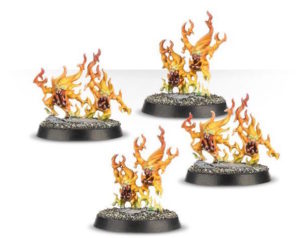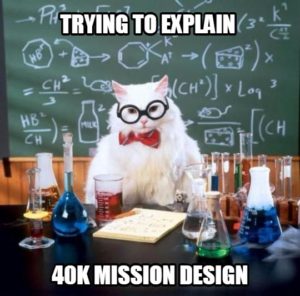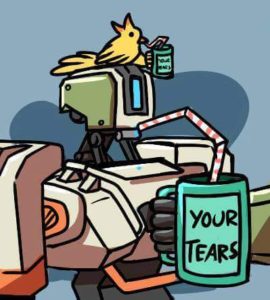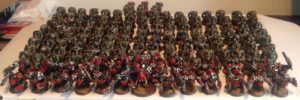Hey everyone, Danny here, and sorry about not having something for you last week, but real life is real life. I’m back now, and the big scuttlebutt is that the ITC has released 6 new draft missions to replace the now venerable standard 6 that ITC players have come to know. This is a big change for the largest organized tournament system in the world, and whether you like ITC or not, a lot of people play it, and it will shape a lot of the conversations about what is good and what isn’t. Let’s break it down!
The primary mission never changes:
That’s right, say goodbye to the Relic, Big Guns Never Tire, and all that jazz. Now, each mission has the same primary scoring mechanism regardless. Really, it is Primary A and Primary B. Primary A: Score a point for each objective you control at the end of your turn and score a point if you killed something. Primary B: score a point if you control more objectives than your opponent at the end of the game turn and score a point if you killed more enemy units than your opponent at the end of the game turn. So, assuming a game goes a full 6 turns, that’s 24 points possible, and notice, no random game length. The game ends at the bottom of 6, regardless.
The nice part of this is that it streamlines the hell out of missions, so you never pull an Adam and forget about kill points. You always know that you are trying to score points by controlling objectives and killing stuff, so your focus should always be on making sure that you can at least contest objectives to slow down your opponent and kill things. If you are running a 4 model army, this may force you to drop down to 3 and take some chaff units as otherwise, you are at a huge disadvantage in the mission although you do make it hard for you opponent to get the kill a unit/more unit portion of each primary.
Let’s look at them real quick:
End of Player Turn Scoring.
Each player scores points at the end of their player turn.
- Do you hold one or more objectives?
- 1pt
- Did you destroy one or more enemy units?
- 1pt
End of Battle Round Scoring.
Each Player also scores points at the end of each Battle Round.
- Do you hold more objectives than your opponent?
- 1pt
- Did you destroy more enemy units than your opponent?
- 1pt
If you are paying attention, you’ll notice Kill Points essentially exists as you get a point for killing a unit, and possibly another point for killing more, so being able to do damage is still a huge part of the game, so don’t turn in all your high-octane death for objective campers just yet.
Going second is a huge tactical advantage:
If you notice in the primary mission, Primary B is pretty much controlled by a single player, whoever goes second. Yes, that’s right, going second is an advantage. As you score both at the end of your turn and the end of the game turn, the second player gets to essentially double-dip, meaning if they control an objective at the end of their turn, they are in a much better position to control more than their opponent through contesting. First Player has no means to counter Second Player here, so (assuming Second Player survives alpha strike) the Second Player absolutely gets to dictate how the battle unfolds in terms of the mission. Yes, alpha strike is real, but a resilient army that plans to go second has a lot moves to win the game. If you are going against an MSU or horde army, you may want to give them first turn to mitigate a lot of their advantage in the mission. It also means that you can change tactics and maybe go for a few easy kills to make sure you get more kills than your opponent did in their turn.
Random deployment at all times:
If you also notice, all the missions have random deployment. This means that you cannot build a list to dominate certain deployment maps. This really adds a nice space as each mission has 6 variations, so really, these 6 missions become 36 distinct missions. This adds a great deal of unpredictability that forces tactics (the application of thought to a dynamic moment) rather than just reward list building and general strategy (the application of thought to a static hypothetical).
The downside here is that in a large tournament setting, it may get awkward to have some players using the long edge and others the short, so there could be some serious logistical issues here. If you are low on space, you may want to limit certain rounds to missions with only long or short edges, so everyone is playing the same way, but there is still some variation here, so you can keep a bit of the flavor.
You select your secondary missions.
Taking a note from formats like NOVA, ITC is now giving players more direct control over the secondary mission. By getting to choose your secondaries rather than roll for maelstrom, you can help mitigate bad matchups. This is huge, and it absolutely rewards smart play and general strategy. If you want to do well at SoCal open (which is running these as a public beta-test), you better have a good idea of what 3 secondaries you are going to take against different builds, and of course, you need to build your list knowing what secondaries someone would likely take on you.
Let’s break em down.
Each one is worth at most 4 points, so there is a possible 12 points for the secondary mission.
- Headhunter: 1pt for destroying an enemy character. {Hello, Smite spam! Anybody bringing 5+ characters is asking to get maxed out here.}
- Kingslayer: Choose an enemy model that is a character.
- Earn 1 point for every 2 wounds of damage you deal to it.
- If the model has the Character and Monster (probably vehicle too) keywords, you earn 1 point for every 3 wounds dealt to it. {Hello, Magnus/Morty/Swarmy! This is good one for any monster-mash list, but it is a terrible choice if your opponent isn’t running any big characters as you can only select one, so if you choose say a Commissar, you are only getting 2 points total for this secondary, and you should be aiming for 4 at all times}
- The Reaper: Earn a point for every enemy unit with 10+ models you destroy. If a unit has 20+ models, you earn 2 points for destroying it. {Hello, Brim/Conscript/Whatever spam! This is a good balance against any horde army as all you need to do is kill 2 20+ units to get max points for this one. That is doable, and if you are not bringing an army capable of killing 50ish models, you are not going to do well anyway. That’s a bad list, sorry}
- Recon: Have a unit at least partially in each table quarter. A unit may only count as being in one table quarter at a time for the purposes of this rule. 1pt per turn. {Hey, jetbikes, be useful again. This one definitely helps out high mobility armies, but it is also easy to defend against. You essentially need to be able to do this for 4 out of 6 turns, and depending on how your opponent deploys, that can be damn near impossible}
- Big Game Hunter: 1 point for every model with 10 or more wounds you destroy. {Again, hello Magnus/Morty/Monster-mash! This is a good way to balance out any monster-mash or armored companies, and if you go against the Mags/Morty show, you can double-dip pretty well here}
- Titan Slayers: For every 8 wounds dealt to units with the Titanic keyword combined, earn 1 point.
- Example: You deal 4 wounds to one Titanic model, and 12 to another, you’ve dealt 16 wounds total to Titanic models, and earn 2pts towards this objective. {This is for people like me that love to bring lots of the big models, and it definitely punishes us. What’s key here is not kill, just wound, so as long as you are doing damage, you are scoring here.}
- Behind Enemy Lines: 1 point for every unit at least partially within 12” of your opponent’s deployment edge at the end of the game. {So line-breaker is back, but this time, worth 4 points. If you are playing a highly mobile army, here is a way to score big, especially if you go second, but wow, getting 4 units back there at the end of the game? That’s harsh. That’s real harsh}
- Death by a Thousand Cuts: Each time you destroy 3 or more enemy units in a single Battle Round, you earn 1 pt. {Hello, MSU! If you are running against a lot of 5 man squads, this can absolutely put you over the top}
Hello stratification!
This is something for the TOs out there: no longer will local RTTs be decided by how many 33-0’s there are. With a total of 42 possible points per game (12 for Primary A, 12 for Primary B, 12 for Secondaries, and 6 for mission specific bonus points), it is highly unlikely to earn all 42. I mean, really unlikely. You have to not only be absolutely slaughtering your opponent, they have to have the army composition necessary for you to max out secondaries and also resilient enough to last all 6 turns.
What this does it make it clear who is really winning and who isn’t. Plenty of games look like landslides in the scoring, but the games were far closer and a few die rolls swung the score wildly. This will make rankings in tournaments far more meaningful, and while losing a game certainly hurts, if it was close, it will separate you out from the pack quite a bit. This scoring format even allows a GT sized event to have a true winner without 6+ rounds as it is highly likely that after 5 (or even 4) games, there will be a clear stratification between first, second, and third.
Hello hordes!
While there are a few secondaries that definitely punish hordes, the Primaries are very geared towards being able to capture and control objectives, and this is where hordes excel. Having a ton of bodies on the table controls where your opponent can move, and so you can deny several secondaries as well as deny them the ability to contest your own objectives. Hordes tend to be resilient, so you can keep your opponent from killing more than a unit a turn, and well, Obsec hordes are a thing.
Smaller, elite armies are going to have a tough time playing the Primaries more often than not, so expect to see even more conscript/brim spam. Ork and Tyranid stock goes way up here as suddenly having 120+ essentially fearless Gaunts makes playing the mission a lot easier, far more than the current missions do. Of course, super elite armies may find themselves at a big disadvantage here.
In short, plan to have to kill 100+ models a game.
Winners and Losers
So in my mind, so far, the winners are any Codex/Index that can field a lot of bodies for cheap, so IG, Chaos, Orks, and Tyranids. You need to bring at least a few giant units to control the board and the objectives, or if not that, a lot of cheap, fast, MSU units to do the same thing although with all units having split fire now, MSU inherently gets toned down a bit.
The losers are Necrons, Knights, Monster-Mash, Mechanized. There are a lot of inherent penalties here, and a lot of the secondaries are easy to get if you bring either Titanic models or high wound models.
Ok all, that’s it. Sorry again for missing last Wednesday, but as always, thanks for reading. You know my usual litany of things: Go check out our Facebook page; go check out our Twitch channel (now with subscriptions); check out our YouTube; and of course, go check out that Patreon, and to our Patreon supporters, we love you.






